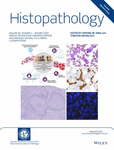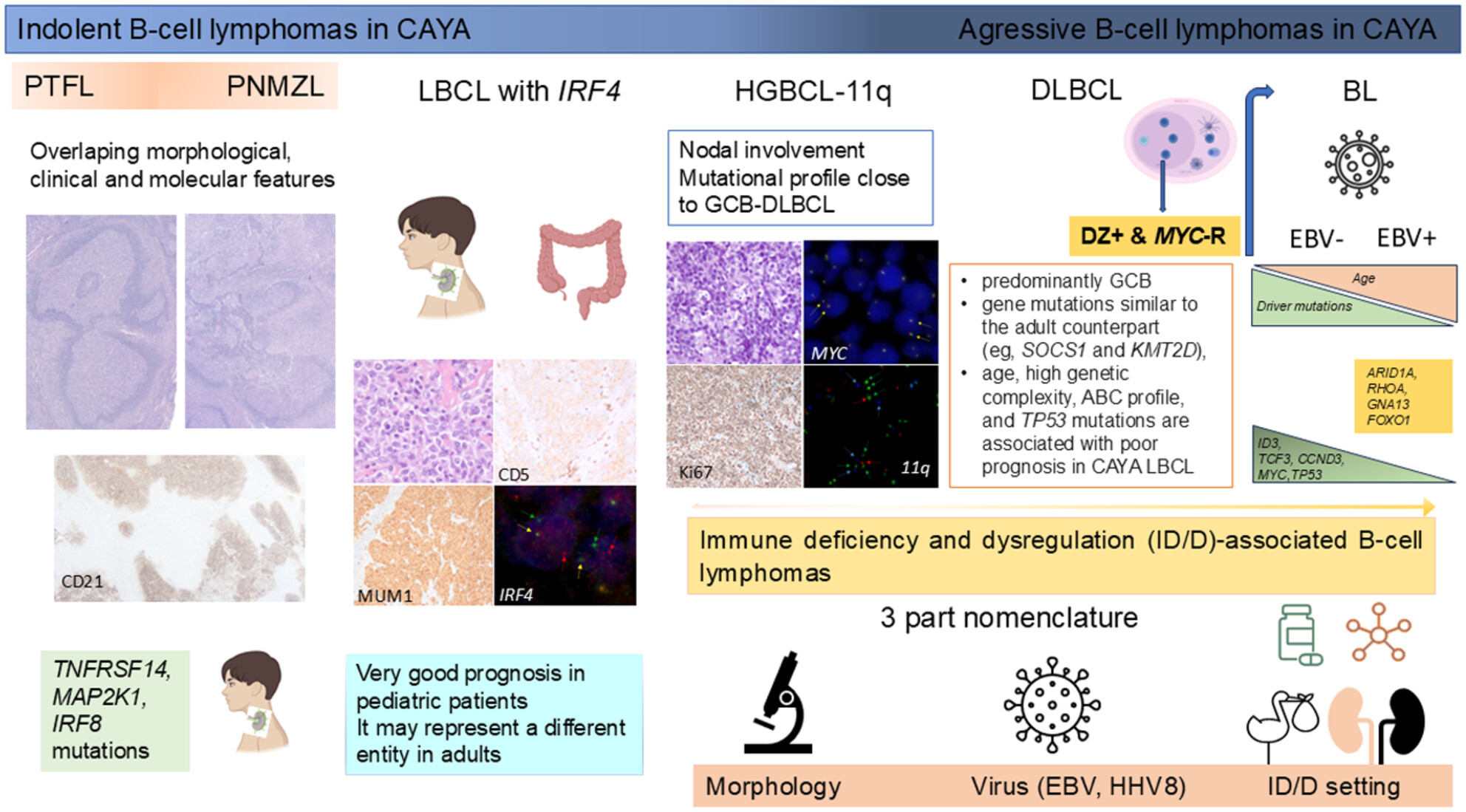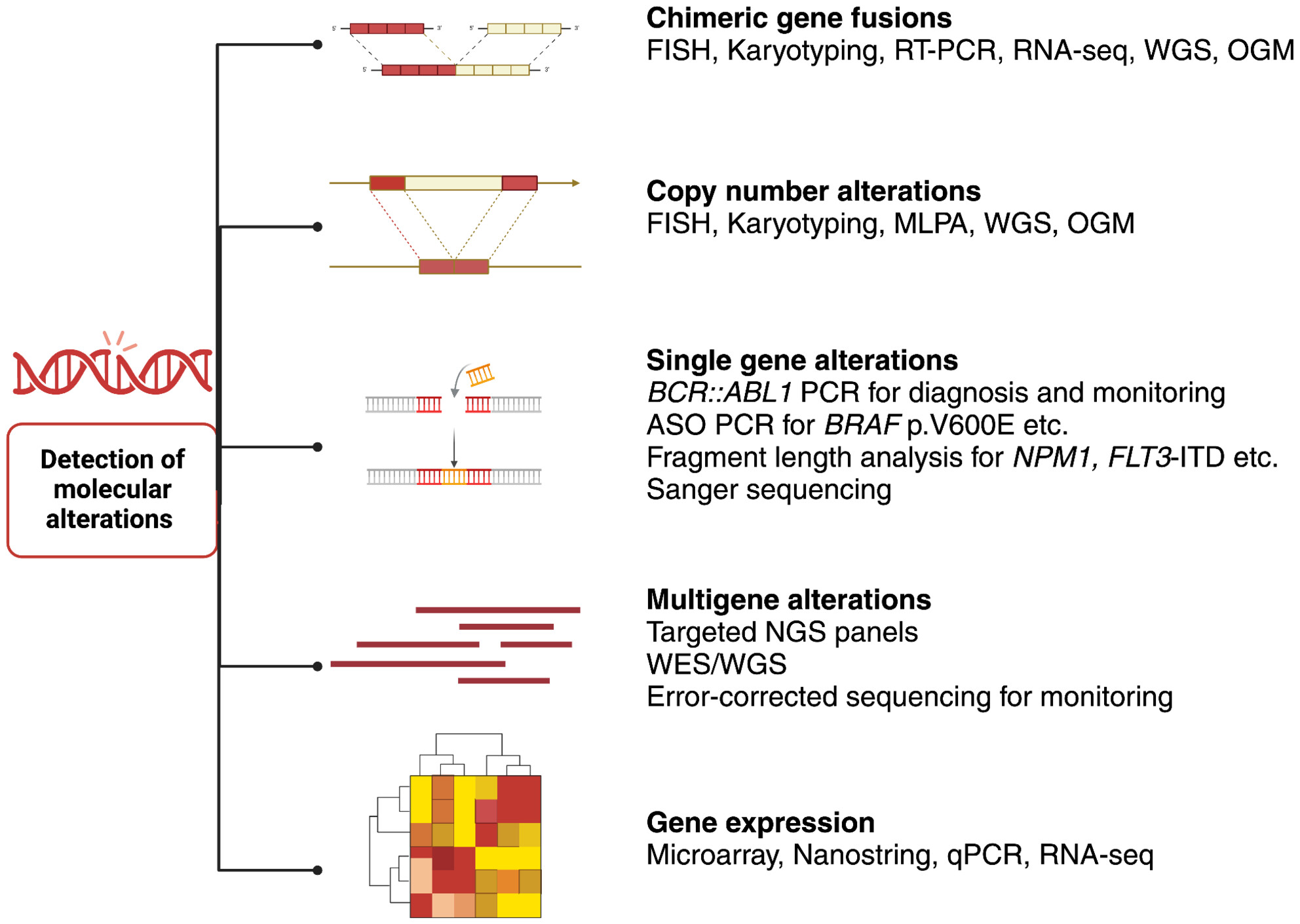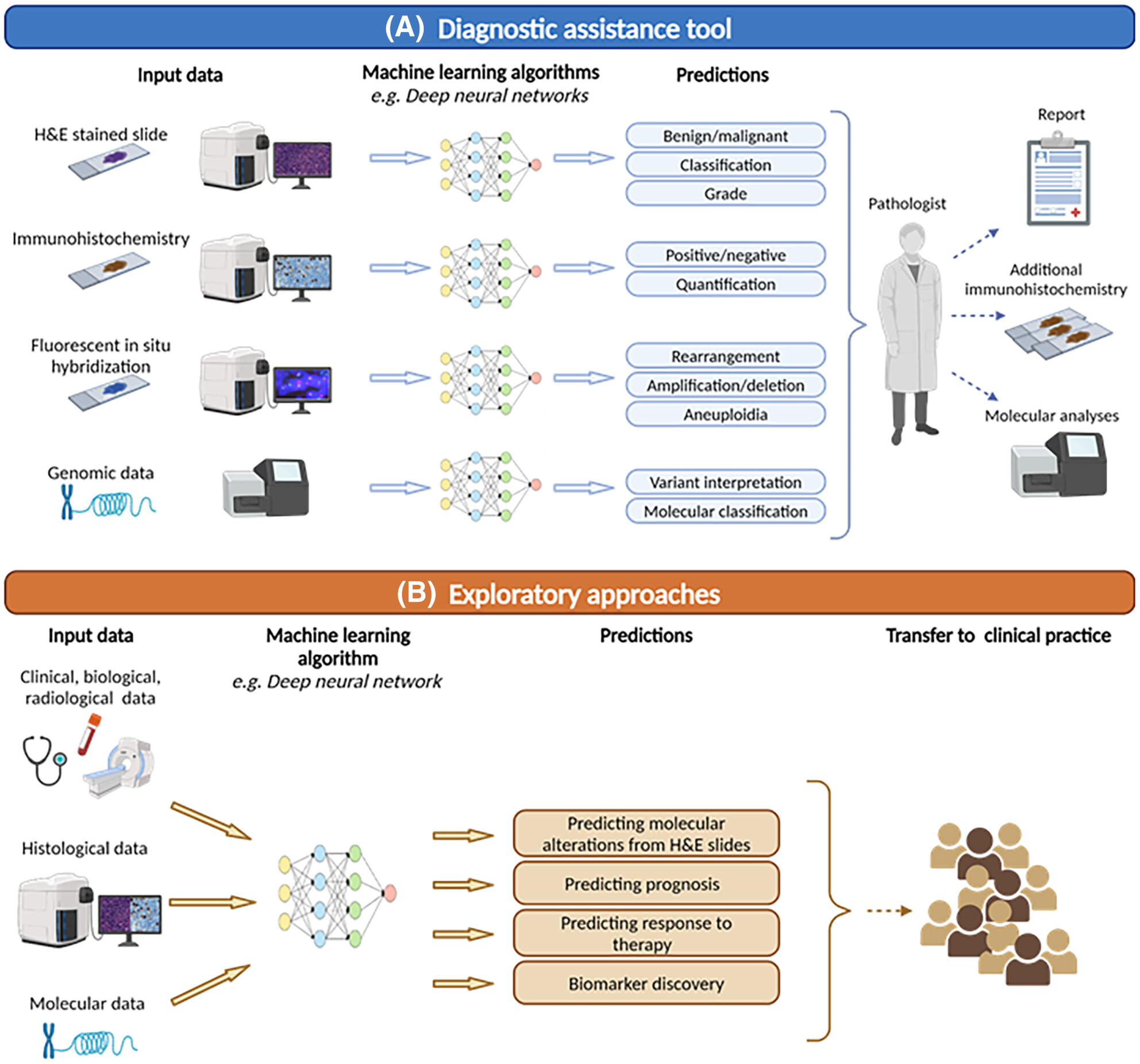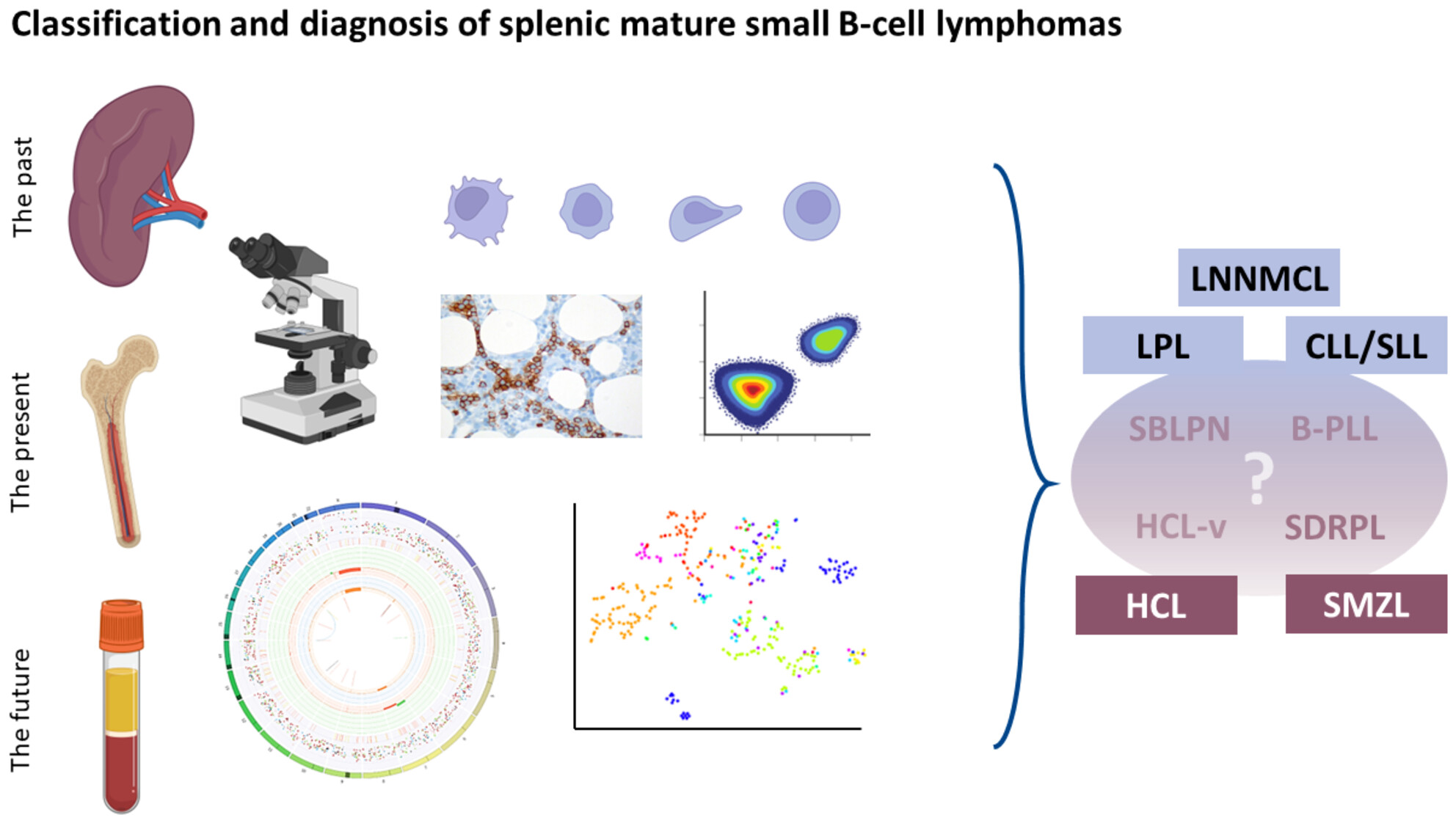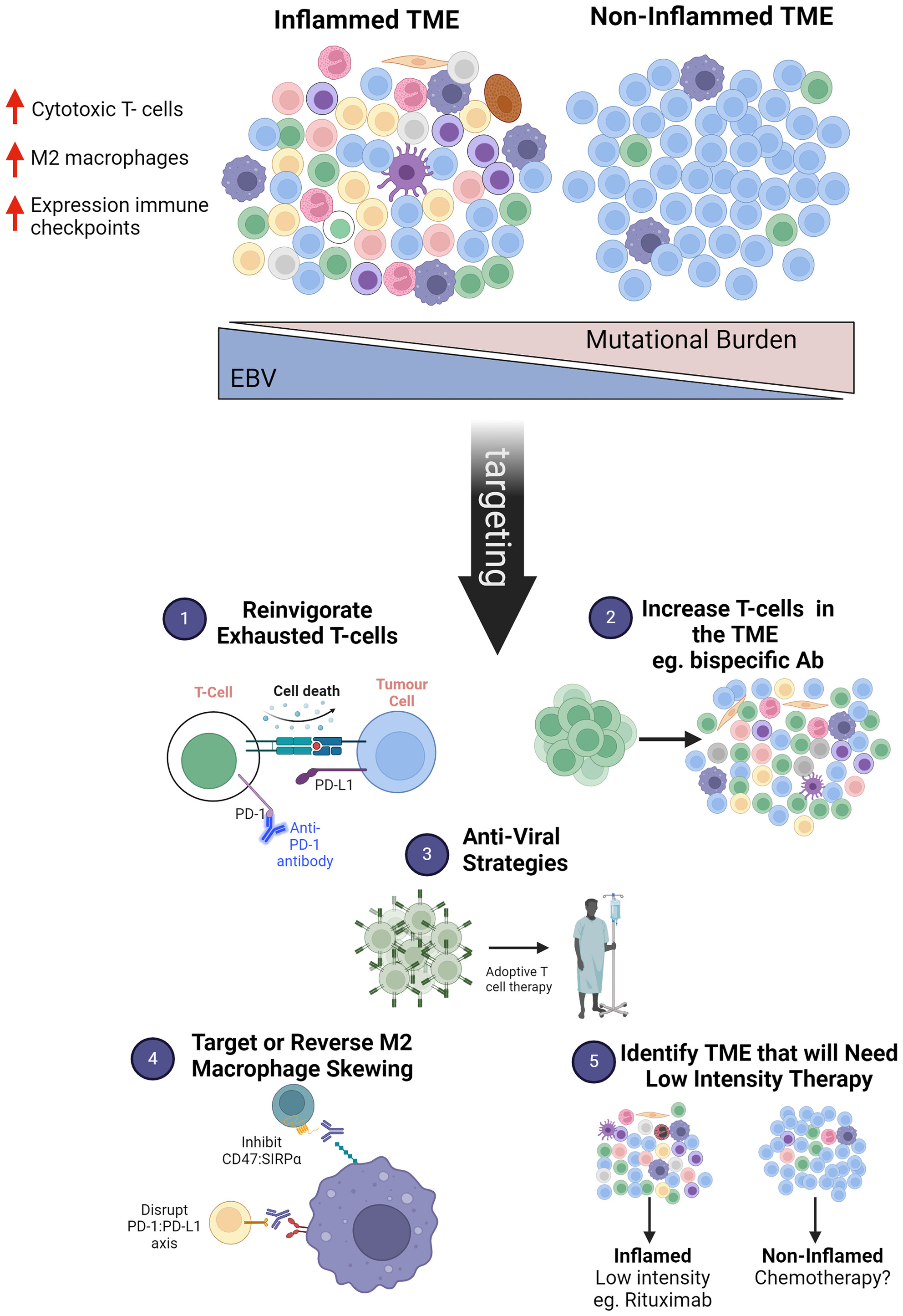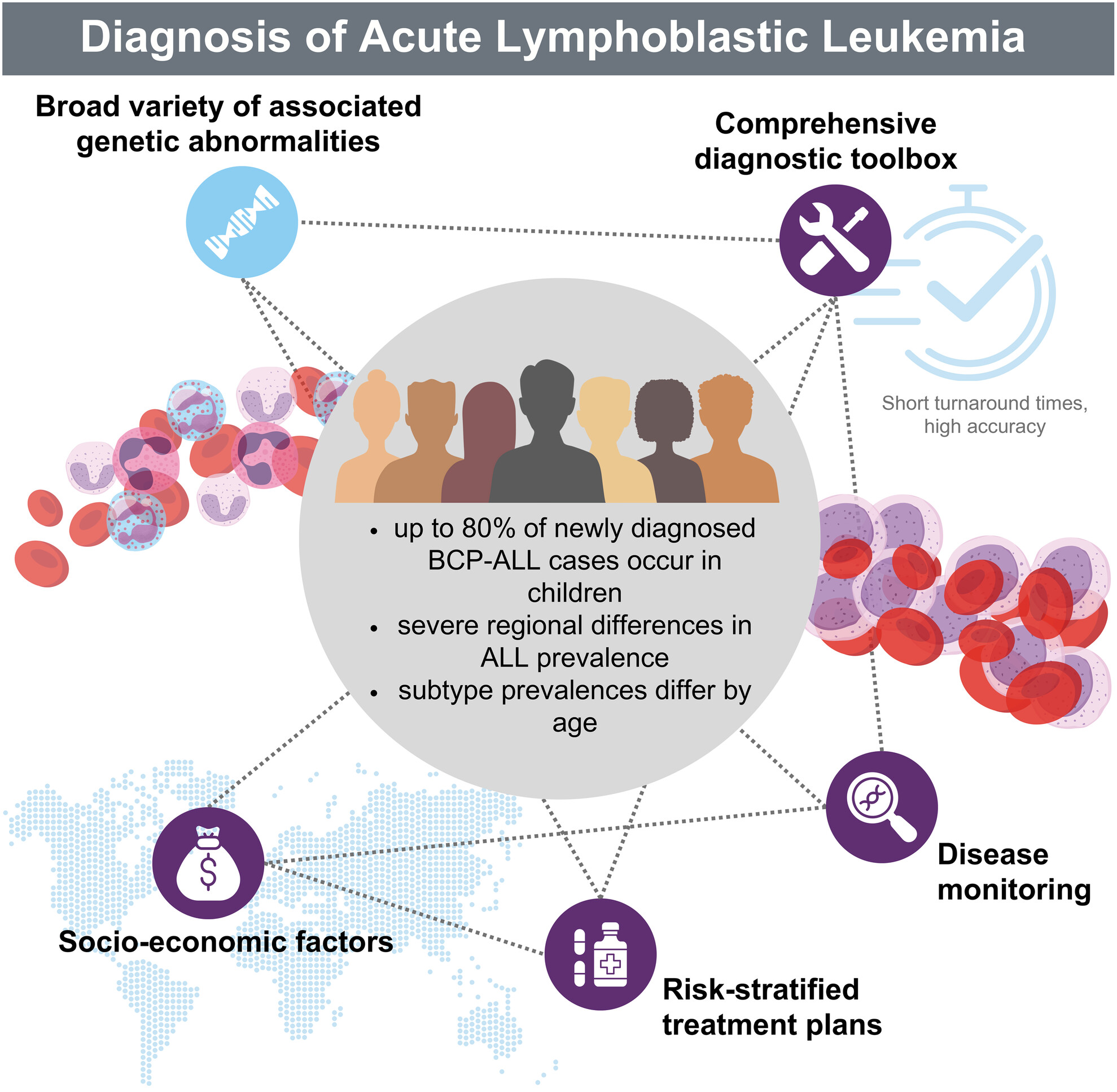Journal list menu
Export Citations
Download PDFs
Featured Cover
Featured Cover
- Page: i
- First Published: 16 December 2024

The cover image is based on the articles Closing the gap between biology and classification in splenic B-cell lymphomas by Piers Blombery et al., https://doi.org/10.1111/his.15323; Diagnosis of acute lymphoblastic leukaemia: an overview of the current genomic classification, diagnostic approaches, and future directions by Wencke Walter et al., https://doi.org/10.1111/his.15338 and Dedicated diagnostic approaches for mature B-cell non-Hodgkin lymphomas occurring in children, adolescents, and young adults by Ana C Xavier et al., https://doi.org/10.1111/his.15362.
Issue Information
Editorial
Haematolymphoid malignancies: beyond the current classifications
- Pages: 3-5
- First Published: 16 December 2024
Annual Review Issue
Global view of haematolymphoid tumor classifications and their application in low- and middle-income countries
- Pages: 6-16
- First Published: 17 October 2024

Accurate diagnosis of haematolymphoid malignancies is necessary for effective cancer care globally, but low- and middle-income countries (LMICs) face major limitations in diagnostic services and processes. We report on the progress and recommendations to enhance the global applicability of haematolymphoid classification systems and improve outcomes for patients in LMICs.
Dedicated diagnostic approaches for mature B-cell non-Hodgkin lymphomas occurring in children, adolescents, and young adults
- Pages: 17-37
- First Published: 20 November 2024
Molecular techniques in haematopathology: what and how?
- Pages: 38-57
- First Published: 15 October 2024
Role of artificial intelligence in haematolymphoid diagnostics
- Pages: 58-68
- First Published: 22 October 2024
Closing the gap between biology and classification in splenic B-cell lymphomas
- Pages: 69-78
- First Published: 15 October 2024
Follicular lymphoma research: an open dialogue for a collaborative roadmap
- Pages: 79-93
- First Published: 29 October 2024
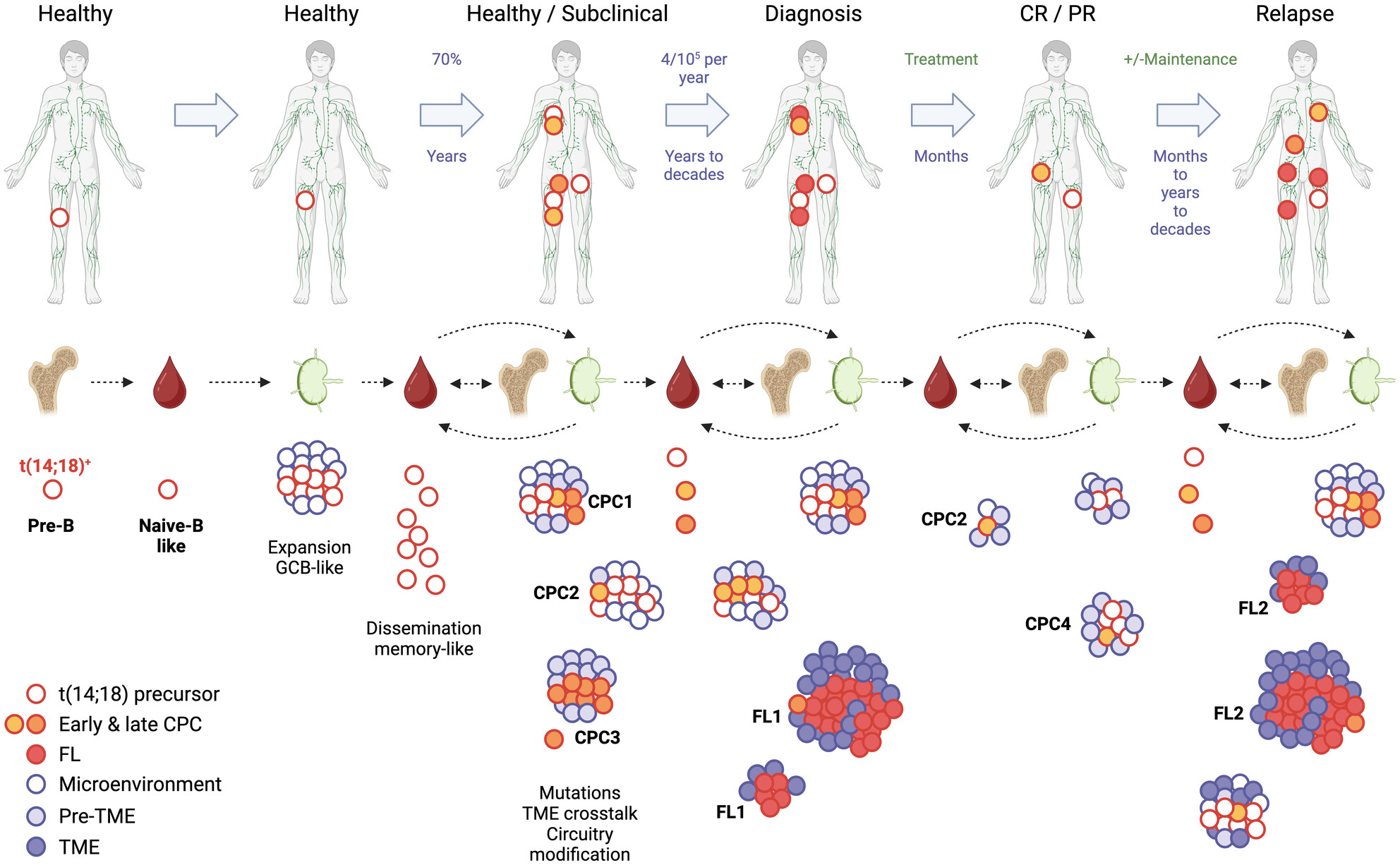
In this review we discuss the gaps in the current follicular lymphoma (FL) in terms of diagnosis and understanding of the underlying functional biology that can predict clinical course and response to therapy. This review intends to be a first step and an interactive platform to a collaborative roadmap towards better understanding and care of FL.
Evolving molecular classification of aggressive B-cell lymphoma
- Pages: 94-105
- First Published: 15 November 2024
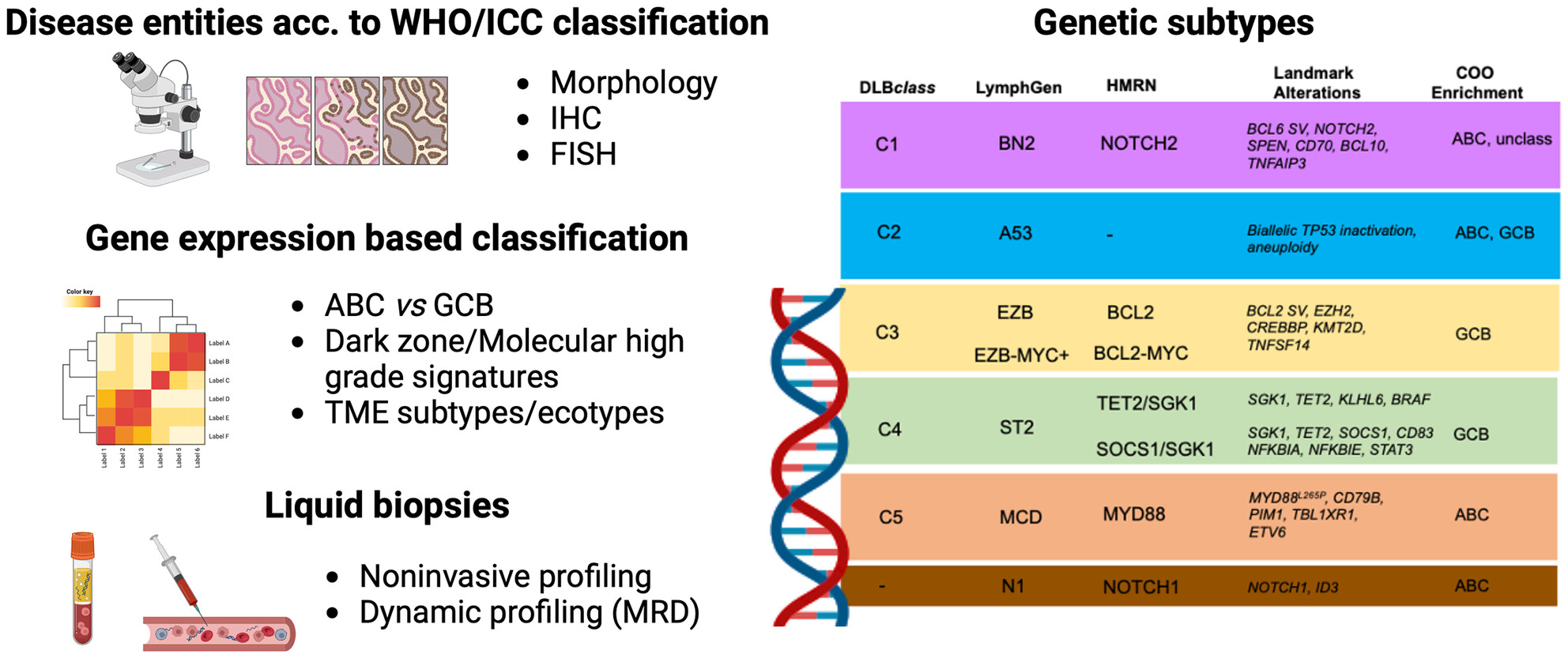
Aggressive lymphomas represent a spectrum of disease entities, defined using clinical, histological, and molecular features. Gene expression and genetic profiling data add further granularity, but consensus is lacking on how these should be applied. We discuss a pragmatic approach to the evolving molecular classification in clinical trials and routine practice.
Genetic and immunological features of immune deficiency and dysregulation-associated lymphoproliferations and lymphomas as a basis for classification
- Pages: 106-118
- First Published: 22 October 2024
Advances in peripheral T cell lymphomas: pathogenesis, genetic landscapes and emerging therapeutic targets
- Pages: 119-133
- First Published: 16 December 2024
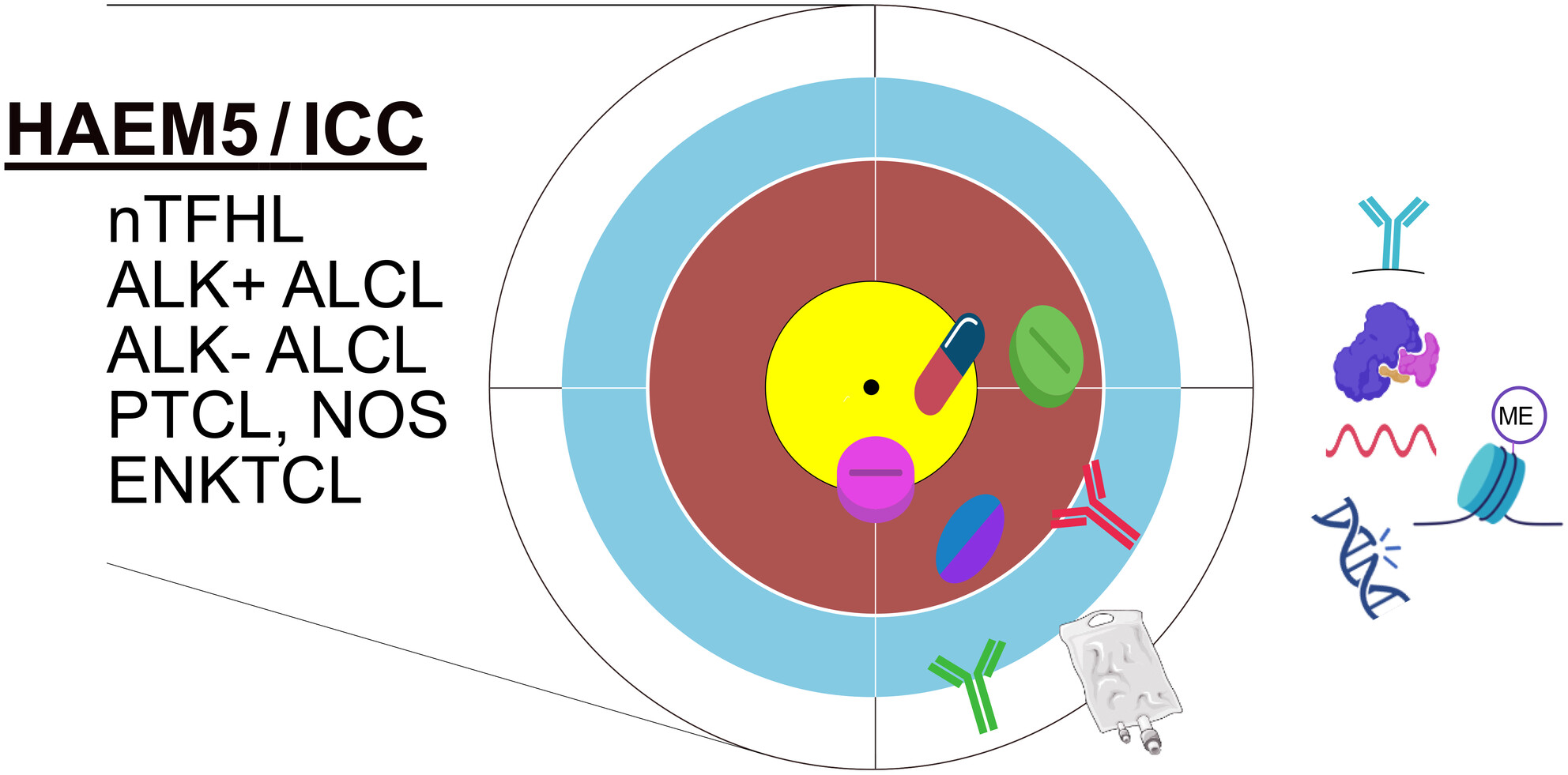
High-throughput genomic and transcriptomic analyses refine current peripheral T cell lymphoma (PTCL) classification and deepen biological insights to support the development of targeted therapies. Patient-specific molecular and functional characterisation enables more precise and even personalised treatments in PTCL.
Diagnosis of acute lymphoblastic leukaemia: an overview of the current genomic classification, diagnostic approaches, and future directions
- Pages: 134-145
- First Published: 15 October 2024
Can molecular patterns help to classify overlapping entities in myeloid neoplasms?
- Pages: 146-157
- First Published: 21 October 2024

Molecular testing has become state of the art in the diagnostic work-up of myeloid neoplasms and molecular features have been incorporated into their classification, together with clinicopathological features. Molecular patterns can inherently help to classify overlapping entities if considered within a framework of haematological presentations.
Future directions in myelodysplastic syndromes/neoplasms and acute myeloid leukaemia classification: from blast counts to biology
- Pages: 158-170
- First Published: 25 October 2024
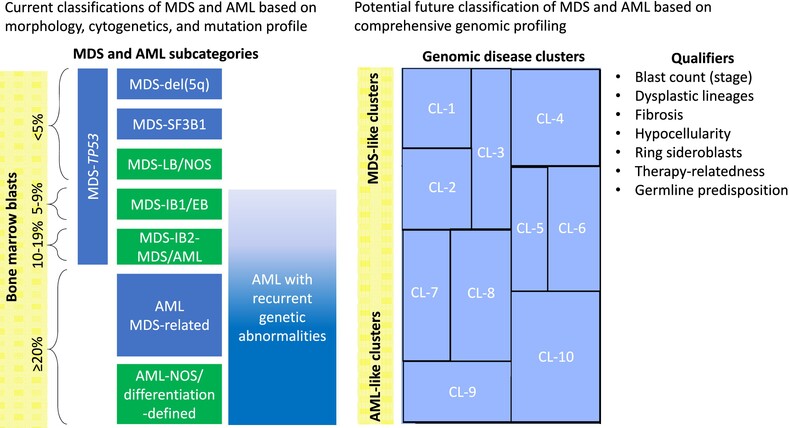
Current MDS and AML classifications are based on a hierarchical interplay of morphology (green) and genetics (blue). In future, disease classification could be based primarily on unbiased clustering analysis of genetic aberrations, gene expression and methylation profile; morphology and ontogeny would be separate qualifiers that further inform therapeutic decisionmaking.




